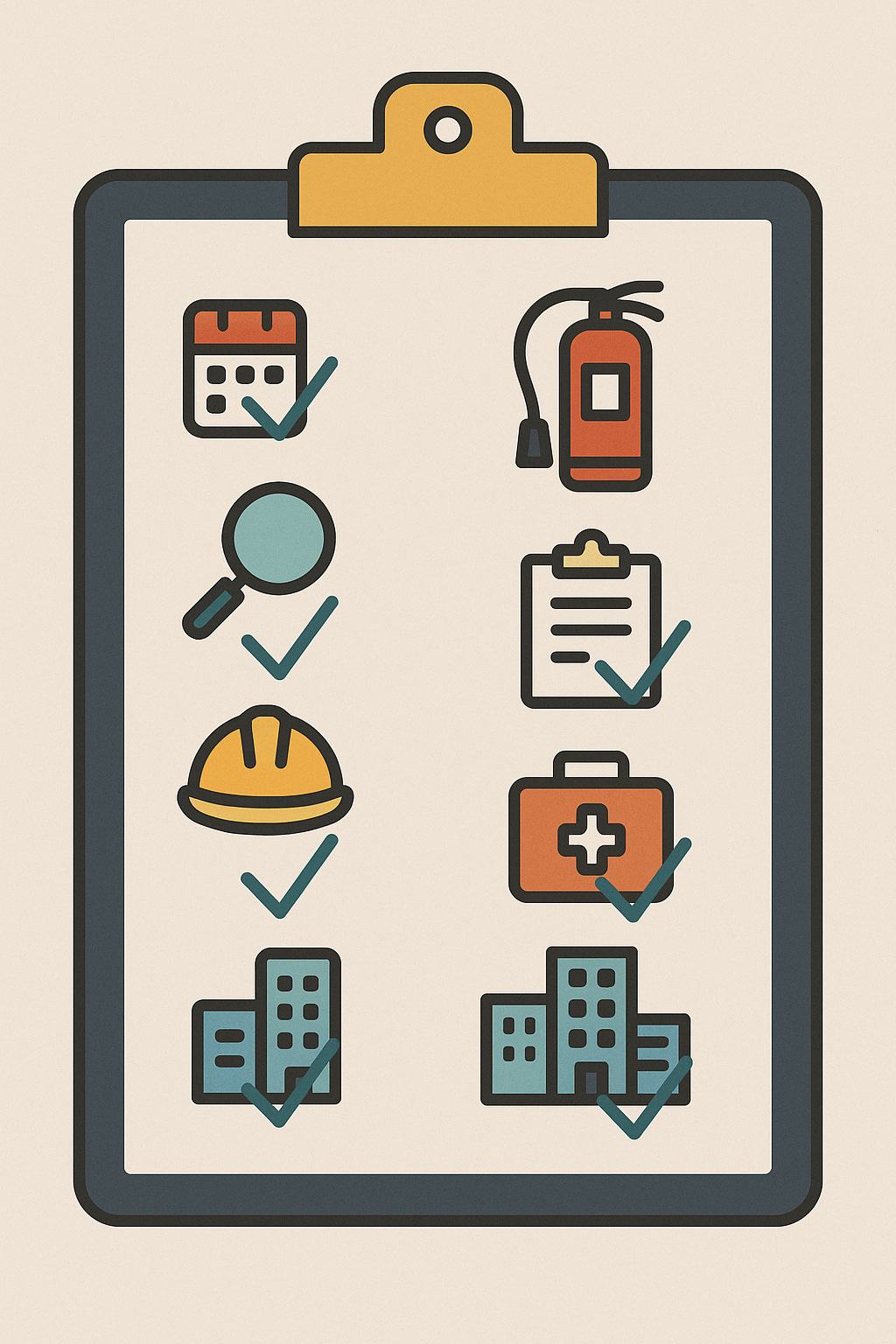7 Essentials Small Businesses Need to be Health and Safety Compliant in Canada
And avoid looking unprepared during an inspection ...
Hello and welcome to this week’s edition of Small Business Safety Pro.
Many small business owners face two kinds of jeopardy when it comes to Health and Safety. Either they don’t know what’s required to ensure they are compliant with Health and Safety regulations, or they just assume that they are and carry on without knowing the risks until a Ministry of Labour inspection or workplace injury shows them otherwise.
The result: injuries, lost productivity and in the worst case, fines or stop work orders.
Key Points at a Glance
Small businesses have obligations under the Health and Safety Act. As a business owner or manager, there are basic requirements you need to know to ensure the safety of your workers, meet your legal obligations and avoid looking unprepared for inspections.
The information below gives you the 7 things you need to cover to be compliant.
See the link at the bottom for a copy of my free Small Business Safety Compliance Checklist.
Most smaller businesses don’t have a dedicated safety professional on board. Usually safety responsibilities fall to the owner, general manager or an HR person who may or may not have a strong background in Health and Safety. While this is completely understandable, it leaves the company’s leadership in a position where they simply don’t know what they don’t know.
Fortunately, workplace safety compliance for small businesses doesn’t have to be complex, but you do have to have covered the basics.
Here are 7 things you need to have if you run a business with 100 employees or less in Canada:
1. Policies and procedures:
First, you’ll need a written Health and Safety Policy. This is a statement from your leadership that clarifies your commitment to Health and Safety and reducing accidents. It must be signed by the most senior official in your company and updated annually.
In addition, you’ll need written policies for workplace violence and harassment as well as supporting policies built around the key hazards in your business. This could include topics like:
· Hazard controls.
· Emergency procedures.
· Lockout/tag out.
· Material handling.
· Ergonomics.
· Return to work procedures for injured employees.
These policies must be reviewed on a regular basis as needed, but not less than once per year.
2. Training Requirements.
Every employee needs basic safety awareness training. This is information covering the rights and responsibilities of workers, supervisors and employers with regard to workplace safety. For example:
· How to report safety risks in the workplace.
· What to do if you are injured.
· How workers can participate in their workplace safety program.
· How a work refusal process is to be handled.
· Employee rights and responsibilities.
· Supervisor and employers responsibilities.
3. Health and Safety Representation.
Companies with 6-19 employees must have a designated worker rep for health and safety. Companies with 20 or more employees at a particular location must have a Joint Health and Safety Committee that meets at least quarterly.
The workplace must be inspected by a worker representative on a monthly basis and both worker reps and safety committees have the right to present health and safety concerns to management. Management may or may not agree with the concern, but they must respond in writing within 21 days if requested to do so.
Companies must also have a certified first aider on site at all times with access to a first aid kit with appropriate supplies for the number of people onsite.
4. Documents and Postings.
Each workplace must post certain Health and Safety documentation. In Ontario the required postings are:
· A copy of the Occupational Health and Safety Act.
· The company’s Health and Safety Policy.
· The violence and harassment policy and program.
· Employment Standards.
· Worker’s Compensation information.
· Monthly workplace inspections.
· Minutes of the most recent safety committee meeting.
· The members of the safety committee and their work location.
5. Hazard Controls.
Businesses must take the appropriate time to identify hazards in the workplace and put controls in place to mitigate them.
Some examples of hazard controls:
· Machine guarding.
· Ventilation.
· Written safe work procedures.
· Personal protective equipment (PPE).
6. Reporting and record keeping.
In the eyes of an inspector, if it’s not documented, it didn’t happen. You must keep records of training, inspections, injuries and other health and safety related activities.
Generally speaking, there are no specific forms you must use, employers can use their own and it can be electronic or hard copy, but it must be accessible to inspectors when they ask for it.
7. Emergency Preparedness.
Finally, businesses must have a plan in place for fires, medical emergencies, power outages. Importantly, your employees must also be trained on these procedures so they know how to react in these situations.
It may seem a bit overwhelming at first. I’ve put together a Small Business Compliance Checklist as a free resource for subscribers to get you started.
If you have any questions, send me a message and I’d be happy walk you through it and answer any questions you may have.
That’s it for this week. Small Business Safety Pro is published every Tuesday on LinkedIn and Substack. I am slowly transitioning away from LinkedIn as the main platform and highly recommend you sign up here so you don’t miss any posts.
Cheers,
Dan.



